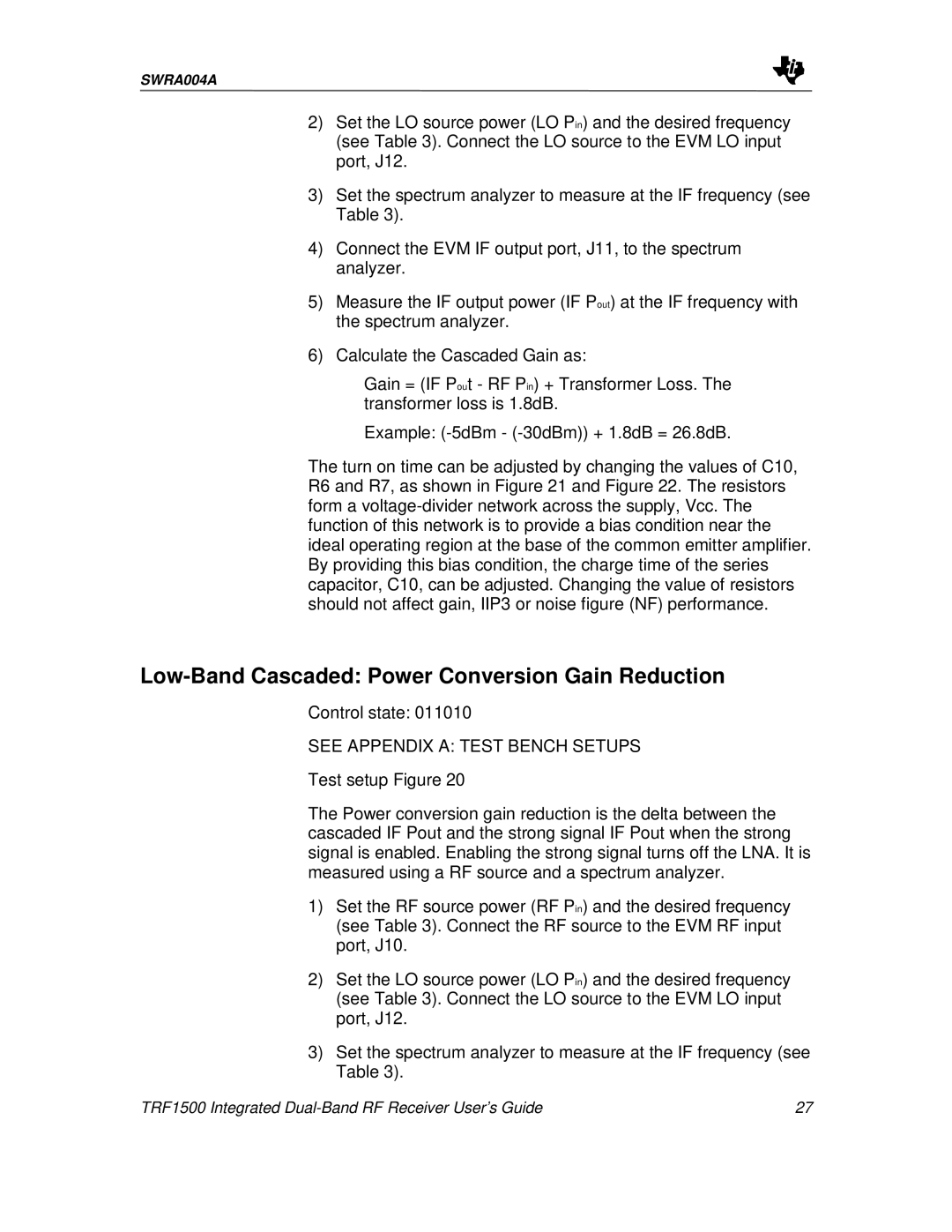SWRA004A
2)Set the LO source power (LO Pin) and the desired frequency (see Table 3). Connect the LO source to the EVM LO input port, J12.
3)Set the spectrum analyzer to measure at the IF frequency (see Table 3).
4)Connect the EVM IF output port, J11, to the spectrum analyzer.
5)Measure the IF output power (IF Pout) at the IF frequency with the spectrum analyzer.
6)Calculate the Cascaded Gain as:
Gain = (IF Pout - RF Pin) + Transformer Loss. The transformer loss is 1.8dB.
Example:
The turn on time can be adjusted by changing the values of C10, R6 and R7, as shown in Figure 21 and Figure 22. The resistors form a
Low-Band Cascaded: Power Conversion Gain Reduction
Control state: 011010
SEE APPENDIX A: TEST BENCH SETUPS
Test setup Figure 20
The Power conversion gain reduction is the delta between the cascaded IF Pout and the strong signal IF Pout when the strong signal is enabled. Enabling the strong signal turns off the LNA. It is measured using a RF source and a spectrum analyzer.
1)Set the RF source power (RF Pin) and the desired frequency (see Table 3). Connect the RF source to the EVM RF input port, J10.
2)Set the LO source power (LO Pin) and the desired frequency (see Table 3). Connect the LO source to the EVM LO input port, J12.
3)Set the spectrum analyzer to measure at the IF frequency (see Table 3).
TRF1500 Integrated | 27 |
